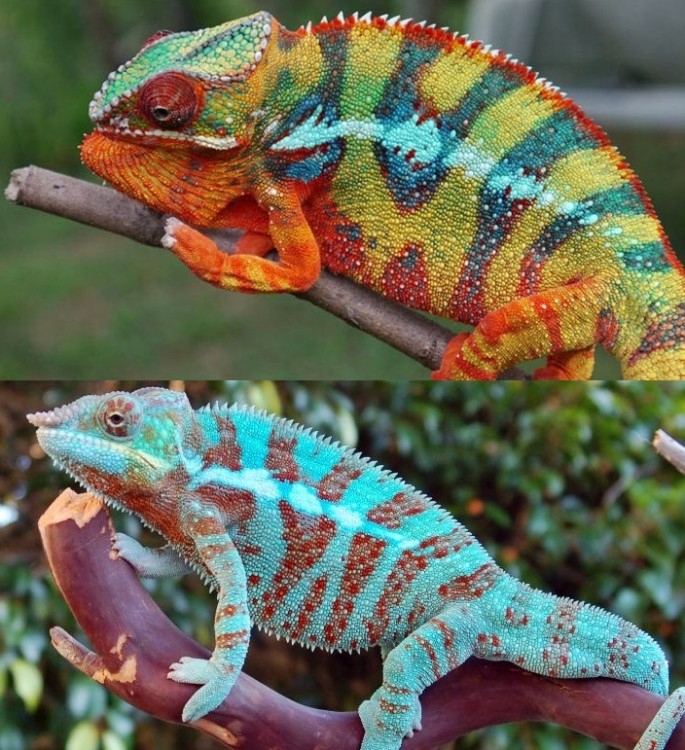The dazzling color-changing camouflage of the panther chameleon has deceived the eyes of people -- and the brilliant brains of scientists, as well.
Long thought to be just one species by scientists, the panther chameleon (Furcifer pardalis) actually consists of 11 distinct species differentiated by their remarkable colors. This truth was hidden in plain sight from biologists by this chameleon's awesome camouflage.
Now, however, a team of biologists led by Prof. Michel Milinkovitch from the University of Geneva, Switzerland used DNA analysis to announce the discovery of 11 and not one species of the panther chameleon.
This intriguing lizard is found in the eastern and northern parts of Madagascar. Male panther chameleons (they have the brightest colors) can grow up to 51 cm (20 inches) in length and have a typical length of around 45 cm (17 inches). Females are smaller at about half the size.
It's a common misconception chameleons of any kind can change color to match any color of the surrounding environment. The fact is all chameleons have a natural color range with which they are born. This color range is affected by their mood, the temperature and sunlight.
In this new study, Prof. Milinkovitch and his colleagues performed a detailed analysis of color variation and molecular phylogeography within the species.
Researchers traveled to Madagascar, photographing and taking blood samples from 324 panther chameleons. Back at their labs, they sequenced the mitochondrial and nuclear DNA of each of the specimens and were in for a shock, said Gizmodo.
What researchers thought all along to be one species was really 11 distinct species.
When they compared each chameleon's sequenced DNA with its photograph, researchers found they could match a chameleon to its species based on variations in its color pattern, even very minute ones.
"The genetic material indicated strong genetic structure among geographically-restricted lineages, revealing very low interbreeding among populations," said Prof. Milinkovitch.
"The mathematical analyses of the 324 photographs demonstrated that subtle color patterns could efficiently predict assignment of chameleon individuals to their corresponding genetic lineage, confirming that many of the geographical populations might need to be considered separated species."
The biologists simplified their analyses of the color diversity into a classification key that allows observers to link most chameleons to their corresponding species using only the naked eye.
The results appeared online May 24 in the journal Molecular Ecology.



























